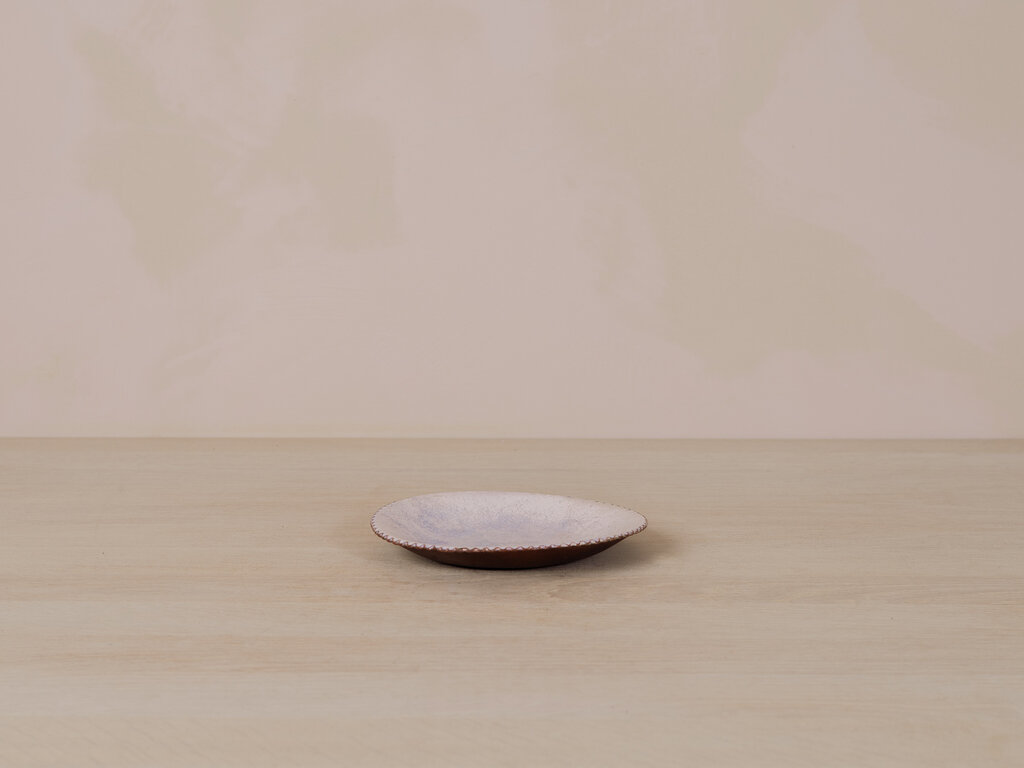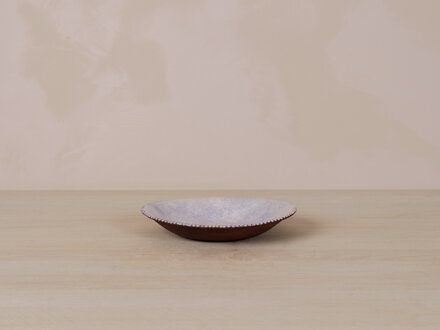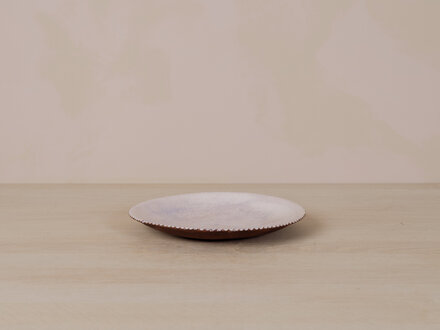


Login
Log in if you have an account
Register
By creating an account with our store, you will be able to move through the checkout process faster, store multiple addresses, view and track your orders in your account, and more.
Create an accountDesign Yoji Yamada
Made in Japan
Dimensions ø 16.5cm x H 2cm
Tsugi-Hagi
A solo exhibition of Japanese ceramic artist Yoji Yamada.
”Tsugi" means to connect a gap. It has the same meaning as “tsugi” found in kintsugi which is to mend a broken piece of pottery with gold.
“Hagi” means to bind two things together. Whether that means to mend a tear in a garment by sewing another piece of cloth, or to gather various things together to make something new.
We are pleased to present our second solo exhibition for Shigaraki-based potter Yoji Yamada. Though this is the second exhibition we have arranged for this artist, this is the first time we will have the pleasure of hosting Yoji Yamada here in person.
There is an incredible atmosphere to Yoji Yamada’s work. Holding them in your hands, they have an ancient, almost excavated feel to them. Through wood firing using a Ittekoi kiln, the surfaces possess a rawness and depth. The changes that arise from natural glaze drawn from the clay through ash, flame and embers (known as keshiki or landscape) result in kase which can be described as a withered aesthetic.
The forms of his work have the reassurance of history, inspired by centuries old shapes, including 18th and 19th century forms from England. These pieces create a connection between the past and the present, with the intention of being used in daily modern life.
Beyond the landscapes found on the surfaces of Yoji Yamada’s work you will find pieces adorned in a rhythm of slip glaze patterns. Created freely and spontaneously, Yoji Yamada refers to this as “lines left as a result of the natural movements of the hand”. What gets his hands moving is the comfortable rhythm of Japanese folksongs and traditional African music.
“I am interested in things that have survived through the ages, irrespective of their general value or differences between things that are natural and those created by man. Whether an object becomes something to be considered beautiful in the future relies chiefly on what we as creators bring to our work; by expressing an antique sense in our creations, we create a visualization of the passage of time, and it becomes easier to imagine the future of an object.”






